Water Pump with Trough
This webpage is dedicated to the late Gillian Watts because the needle case seen here came from her collection. Gill started her antiques business shortly after
she married Geoff Watts in 1969. It was a general antiques shop but her main interest was pottery and porcelain to re-sell, but she loved to collect needlework items.
However her collection of Avery needle cases was her pride and joy and she and her husband spent many happy hours at antique fairs and looking in shops sourcing items for her
collection. (This information and her photograph below comes from her husband Geoff Watts.)
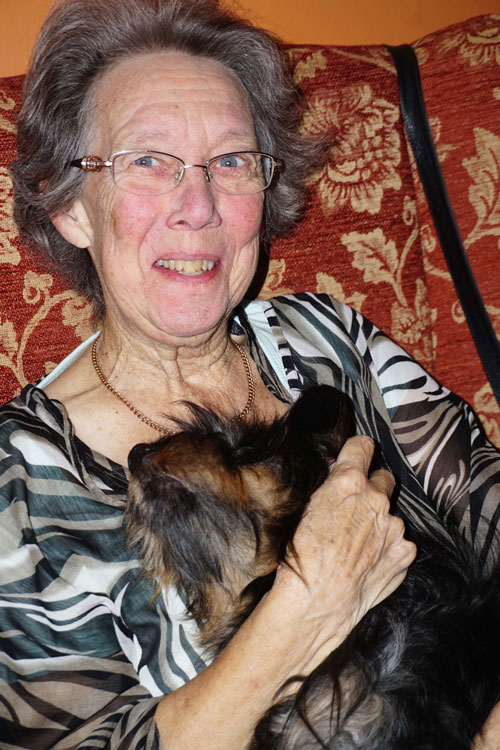
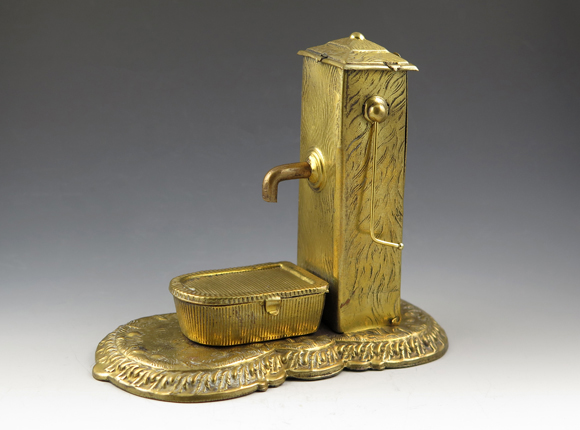
Needle Case
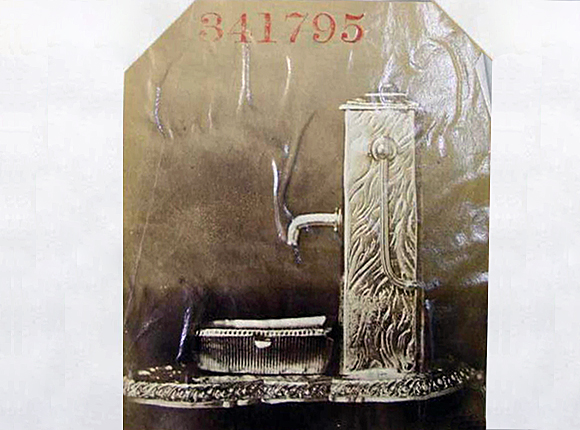
Design Representation
Design Details
Needle Case Type: |
Figural |
Patent/Registered to: |
J. M. Farnol - Birmingham |
Patent/Design Representation #: |
Ornamental Class 1: Metal: #341795 |
Patent/Design Registration Date: |
October 21, 1879 |
Location of Patent/Design Registration: |
The National Archives (TNA) - Kew, UK |
Reference #:
|
TNA Representation - BT 43/45/341795
TNA Register - unknown |
Dimensions: |
7.8 cm tall by 9.5 cm wide |
Material: |
Brass |
Name Variations: |
Unmarked |
Other Variations: |
None |
Additional Photographs
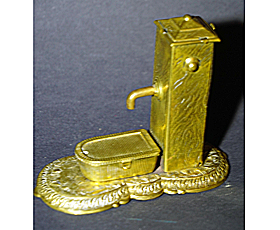
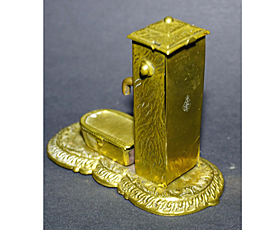
Additional views (photos courtesy of Geoff Watts)
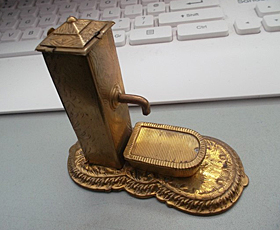
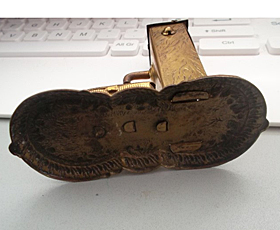
Additional views (photos courtesy of Colin Jackson)
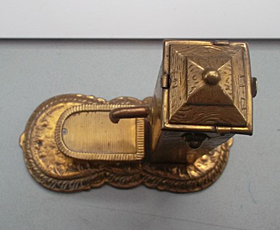
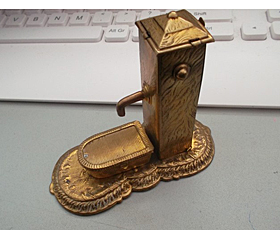
Additional views (photos courtesy of Colin Jackson)
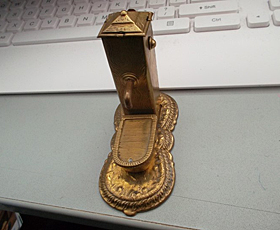
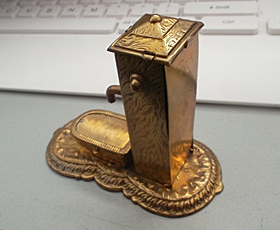
Additional views (photos courtesy of Colin Jackson)
Facts
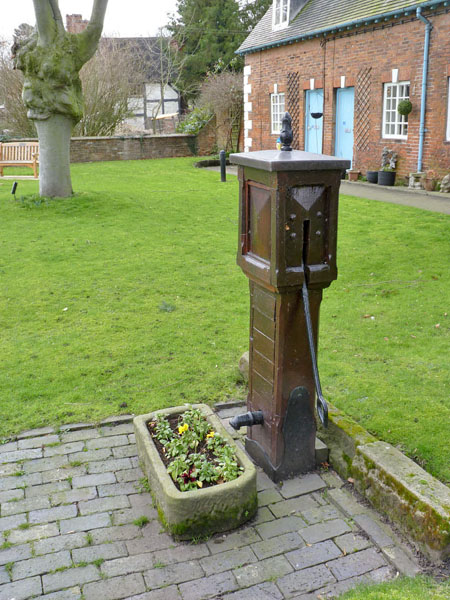
The water pump in Victorian times gave a community access to water for domestic use. It was a hand operated means of raising water from a well, spring or other water
source. When the handle is raised, the pitcher pump uses a piston or plunger to create a vacuum in the pipe into which water is pushed by atmospheric pressure and trapped
by a valve. When the handle is pushed down another valve opens at the top of the piston and forces the water from the spout.
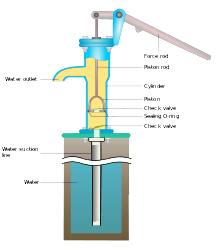
History
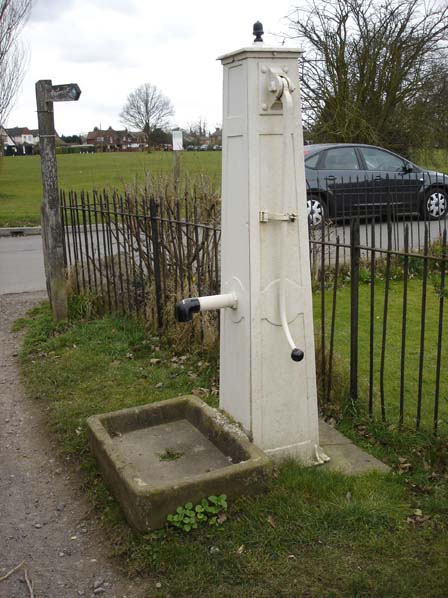
Since the earliest times it has been recognised that human survival relies on access to a clean
water source and settlements typically were founded near naturally occurring
fresh water. Improvements in methods of conveying water date back to 3000 BC where in Mesopotamia, a counterweighted lever with attached bucket was employed. A similar
device, a Shadoof, for drawing water from deep wells was used in Egypt in 2000 BC. Other notable devices include the screw pump, although attributed to Archimedes at around
234 BC, evidence of which has been found with a system of canals, dams, and gravity fed aqueducts at the site of the palace of Assyrian King Sennacherib who ruled from 704-681
BC. The earliest hand pump, the force pump, is attributed to Ctesibius of Alexandria (285 -222 BC) who is credited as the father of pneumatics. The lift or pitcher
pump used in the Victorian era operates on a similar principle and is still in use today in developing countries. These pumps can be hand powered or by wind or
electricity.
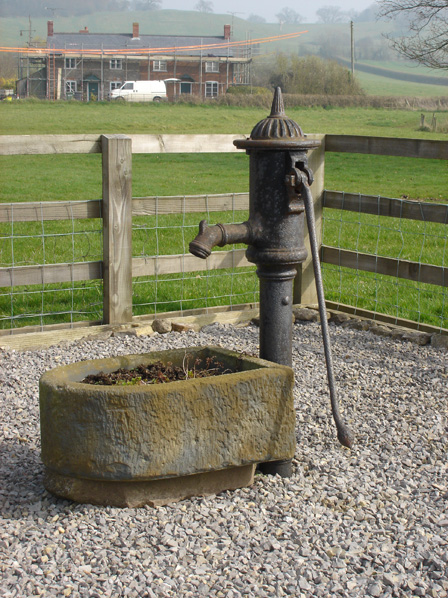
Miscellaneous
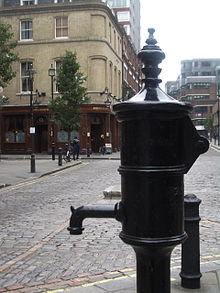
London in early Victorian times was densely crowded, had poor sanitation, housed malodourous industries with unpleasant waste, and had lots of livestock used for
transportation, food and milk production. By reports much of it stank. The prevailing view even in the medical profession was that some diseases were caused by
miasma or poisonous vapours in the atmosphere. When there was another outbreak of cholera, this time in Soho in 1854, it was not attributed to the water quality. It
is estimated that 10% of the neighbourhood died in seven days. Dr John Snow was a physician who did not support the miasma theory. He was a founding member of the
Epidemiological Society of London established in 1850 and proceeded to draw up a map of the fatalities by household. He was able to show that most deaths were in families
that used a particular water pump on Broad Street either because of proximity or because it was the preferred water source. He was successful in having the pump handle
removed though it would be some time before his theory of a water borne cause of the disease would be accepted. At that time sanitation for houses consisted of a cesspit
beneath the dwelling which would be collected when seen as necessary for removal and dumping into the Thames. Leakage from a cesspit found to be less than a metre from
the Broad Street pump well was later detected. It transpired that this pit had collected waste from washing nappies of an infant with cholera almost certainly triggering
the outbreak.
John Snow was not only a pioneer in the field of Epidemiology but also the measured use of ether and chloroform for surgical anaesthesia and obstetric pain relief. Again,
his views on pain free childbirth were opposed by much of the medical profession and surprisingly the Church of England. His methods gained acceptance however after he was
requested to administer pain relief by Queen Victoria at the birth of her 8th child Leopold in 1853 and again for the birth of Beatrice in 1857.
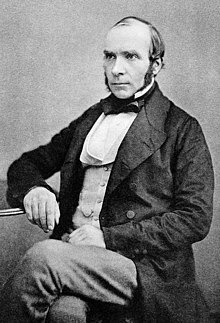
Note: Right side panel text and photos provided by Lynda Herrod.





















